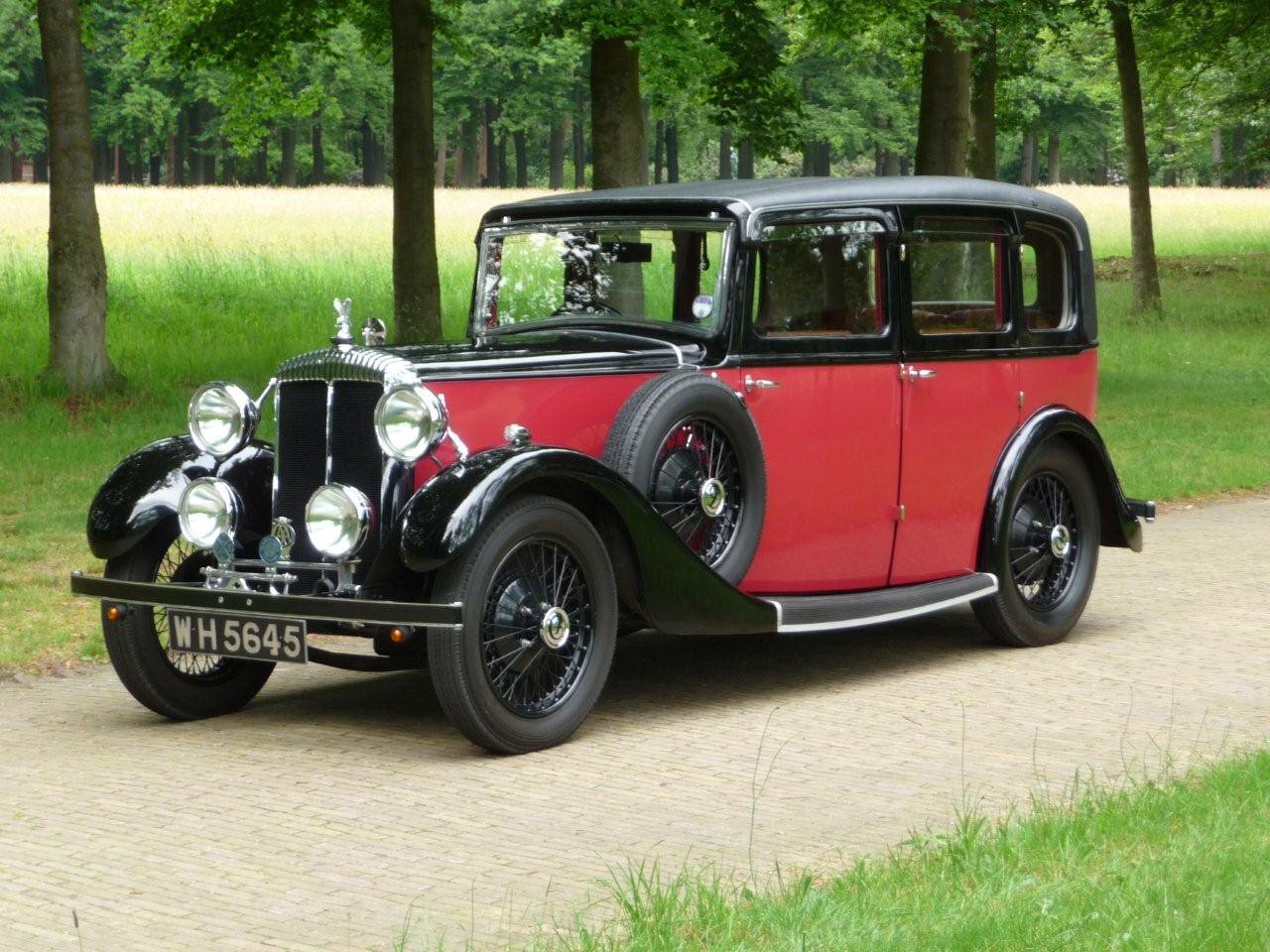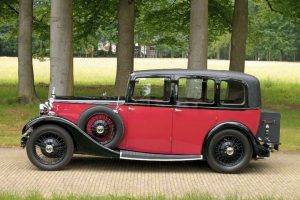
1934 Daimler Light 15
1934 Daimler 15 Mulliner
Chassis Number: 37824
First Registered: June 1934
History:
The car was purchased from Bolton in 1986 having stood in a seemingly derelict condition for over 20 years.
The photos below depict the condition of the car at that time and a complete restoration was required in order to bring the car to its present condition.
Work commenced shortly after purchase, with complete chassis and engine rebuild. However due to complications sourcing the many parts that were required, restoration was postponed for several years. It took just over ten years to complete the jigsaw of parts and the car was finally completed in the latter part of 2007.
The log book details just one owner from new and was first registered in Bolton in June 1934. The cost of this vehicle in 1934 was £450.00.
I was very pleased to be awarded first place for veteran, vintage and pre 1945 and honored to receive the Walton and Hipkiss Trophy at the Daimler and Lanchester international rally held at Anstruther Harbour , Anstruther in Kingdom of Fife in June 2008.
The Daimler Fifteen, was a saloon car announced in September 1932. It was the first Daimler product for more than two decades with an engine that breathed conventionally through poppet valves. Conventional valve gear had improved, superseding the former advantages of the Daimler-Knight sleeve-valve technology. The car’s name derived from its tax rating of 15 hp. The design of its 6-cylinder 1.8-litre engine was developed from the 4-cylinder 1.2-litre Lanchester Ten which was installed in Lanchester’s shorter versions of the same chassis and bodies and using the same Daimler semi-automatic transmissions.
| Daimler Fifteen 1932—1935 | |
|---|---|
 4-door six-light saloon
|
|
| Overview | |
| Manufacturer | The Daimler Company Limited |
| Body and chassis | |
| Class | Executive car |
| Body style | four-door “six-light” saloon £450 Coupé £465 Chassis only £350—bodies as arranged with coachbuilder by customer |
| Layout | FR layout |
| Related | Lanchester Ten |
| Powertrain | |
| Engine | 1,805 cc 6-cylinder in-line ohv (at launch) 2,003 cc 6-cylinder in-line ohv (from August 1934) |
| Transmission | 4-speed Wilson preselective self-changing gearbox and Fluid Flywheel an open propellor shaft and underhung worm-driven axle |
| Dimensions | |
| Wheelbase | 109.5 in (2,780 mm) Track 50 in (1,300 mm) |
| Kerb weight | 24 cwt |
| Chronology | |
| Successor | Daimler Fifteen 1936 |
The Fifteen was the first Daimler to be offered at less than £500 since World War I. The Great Depression of the 1930s was well established and Daimler, responsible for economical BSA three-wheelers and, from 1931, the mid-price Lanchester range, went downmarket to assist sales in the austere times. Perhaps it took twenty years but this risky strategy with the Daimler name may have lost Daimler its super-luxury reputation and eventually brought about its demise.
In August 1934, in anticipation of the reduction in annual tax charge, the Fifteen was given a larger 2-litre engine. Again in August 1936 the engine was increased to 2.2-litres then another two years later to a full 2½-litres.
Engine
The long-stroke engine’s six cylinders and upper half of the crankcase are all in one block, like the detachable cylinder head, of cast-iron. The head carries the valves and rocker gear operated by pushrods from the chain-driven camshaft running in an oil bath within the block below. The pistons are of aluminium alloy. The crankshaft runs in four bearings and has a vibration damper.
Lubrication is fully forced including to the gudgeon pins. Cold starting conditions are provided for by splash lubrication to all vital parts. There are separate inlet and exhaust manifolds on the offside (left) with a hotspot. Cooling water circulates naturally to the radiator. A mechanical fuel pump delivers petrol from a tank at the back of the car.
Automatic engine starting is not needed as, owing to the fluid flywheel, the engine cannot be stalled in the ordinary way.
Transmission
The transmission consists of the Daimler fluid flywheel and its Wilson self-changing pre-selective, four-speed gearbox. An open propellor shaft takes the power to an underslung, worm-driven back axle.
The pre-selective finger-and-thumb lever for choosing gears is under the steering wheel and may be worked by the left hand.
Chassis
Engine, fluid flywheel and gearbox are assembled as one unit held at four points with rubber. The two back bearers are on the forward parts of the X-member of the chassis frame.
The springs are all semi-elliptic and are supplied with hydraulic shock absorbers. The springs are set wide to minimise any tendency to roll. On the radius-rod-controlled front axle they are shackled forwards, flat, splayed and held out of centre. The back springs are under the axle and outside the chassis frame.
Hydraulic four-wheel brakes by Lockheed are fitted with a vacuum servo. The frame passes below the rear springs to allow a low floor without wells within the foorboards.
The tyres on the 19 in (480 mm) wheels have a section of 4.75 in (121 mm)
[nivoslider id=”242″]


Bas Allen
June 29, 2017 10:30 amI purchased WH 5654 in September 2015 & have since completed a complete mecanical restoration of this fine example of the marque .
If a write up would help just let me know .
Kind regards
Bas
Christopher Lloyd
September 17, 2020 12:11 amFabulous car…..my late father had the 1933 one…..WV 8131. Tried unsuccessfully to track it…..not known in the Daimler register, my dad sold ours back in the late 1960’s. Can only conclude it was sadly scrapped.
My best wishes to you….keep that lovely daimler on the road for many more years.
Chris.